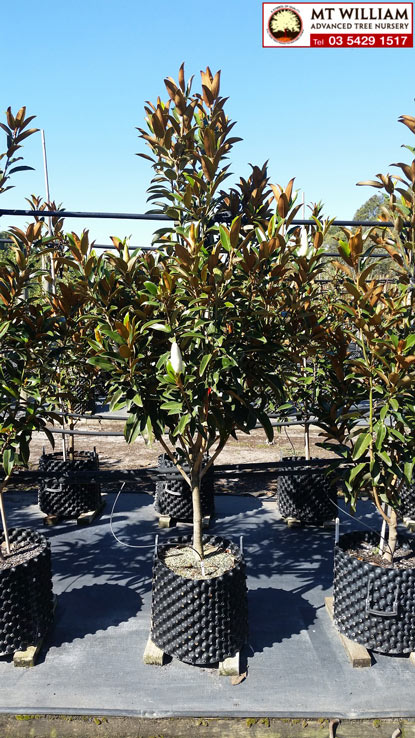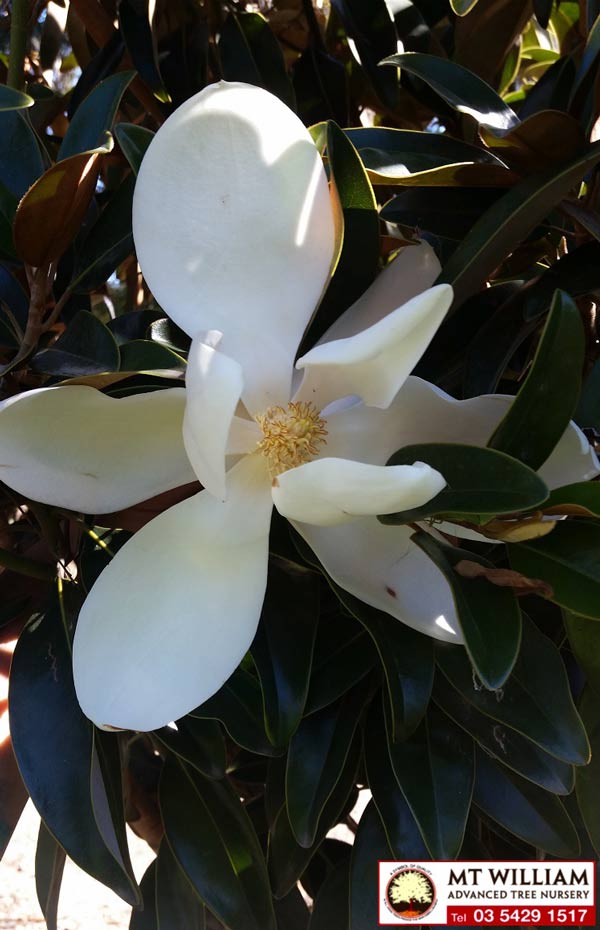Magnolia grandiflora cvs
Bull Bay Magnolia
Technical information
Height: 5-12m
Habit & Growth rate: This large, stately, native North American evergreen tree, with its large, beautiful saucer shaped flowers. The tree forms a dense, pyramidal shape. However form and growth rates vary depending on the cultivar.
Foliage: Leathery, oblong, shiny leaves with the underside of the leaf covered with a fine red brown felt like texture.
Comments:
One of the few broad leaved evergreen trees that can be cultivated in a wide range of climatic conditions. Will thrive in full sun and hot conditions once established. Best results are achieved with regular irrigation and protection from hot northerly winds and in soils that have good water retention.
Exmouth: Raised in the English town of that name in the 18th century. This is one of the oldest cultivated evergreen magnolias. Exmouth is a more upright form than other Magnolia grandiflora. The leaves are a deep green and underneath a pale brown and felted at first. Its more upright habit is quite vigorous and grows to about 8-10m
Greenback®: A recent introduction to Australia. Selected for its smooth, hairless backs to the mature foliage. Growth habit is upright, uniform and quite dense. Grows 10 X 5 metres with its dense habit making it good for screening. It is an occasional flower during summer months at the branch tips.(Reference: Flemings Urban Tree Guide).
Alta™: Another recent introduction into Australia by Fleming’s Nurseries. Fastigiate when young, broadening slightly with age, to become narrowly conical. Moderate to fast growth rate reaching 10 X 3m. Both foliage and branch habits are dense. Will adapt to a variety of sites and shows good heat tolerance once established. (reference: Flemings Urban Tree Guide)
Little Gem: compact upright form, reaches probably 6m+ tall, has small leaves and flowers, is very slow growing, flowers heavily at an early age and for a long time during the summer, with a bronze underside leaf.


Reference: Edward F. Gilman 1997 Trees for Urban and Suburban Landscapes
David More & John White 2003 Cassell’s Trees Of Britain & Northern Europe.
All plant dimensions are estimates only and ultimate size and growth rates will depend on growing conditions, particularly when used in some urban environments.






